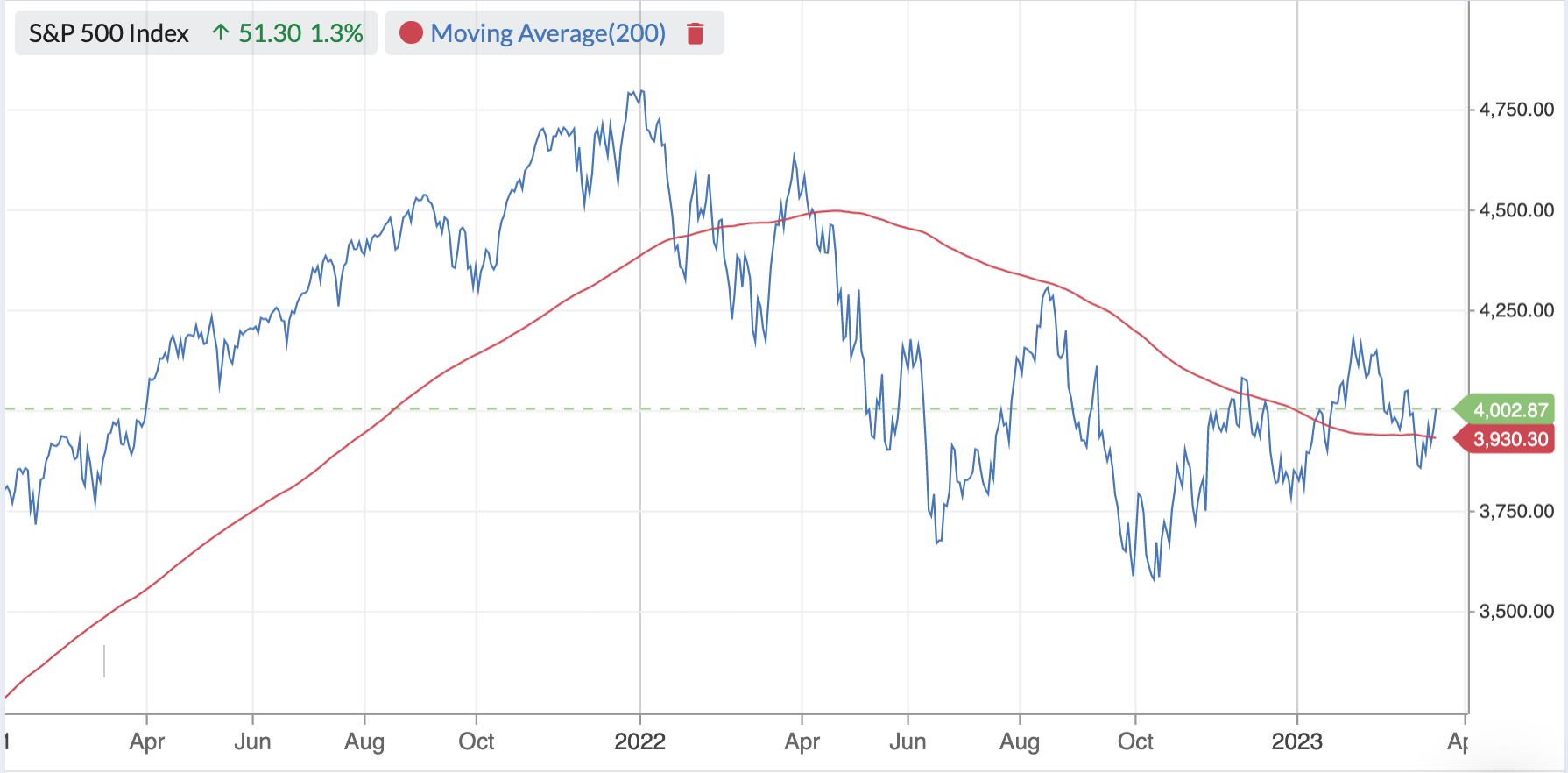With stock markets wobbly, it's a good moment to review the trend following model I've published occasionally over the last year. There is a well-known premise that asset prices have had a tendency to trend, and stock markets are no exception.
Brief primer on trend following
One of the simplest approaches to trend following is to compare the price of an asset (like the S&P 500) against its average price over a certain look back period. You buy the asset when the price moves above the average, and sell when it moves below. As prices change over time, the average is known as the moving average and can be plotted against the price in most chart packages, including ours.
Below shows the S&P 500 versus the 200-day moving average (200d MA).

There's been a great deal of research performed on the profitability of such an approach, with a particularly readable study by Meb Faber in "A Quantitative Approach to Tactical Asset Management".
He showed that in US markets between 1901 and 2012, buying the S&P 500 when it's above the 200d MA, and staying in cash when below both increases annualised returns (from 9.3% to 10.2%, and reduces downside volatility considerably (from 17.9% to 12.0%. Aside from these benefits, trend following reduces the maximum drawdown considerably (from 83% to 50%.
One great insight from Faber in a follow-up paper is that stock markets get far more volatile when they are below the 200-day moving average than when above. Not only this, but returns are lower too.
"On average, returns are 60% lower and the volatility 30% higher when the market is below 10-month simple moving average."
He reasons that humans use different parts of their brain when markets are downtrending than uptrending, which drives volatility in bear markets. Apparently, we use the same part of the brain that's stimulated by cocaine or morphine when markets are rising, but we use the flight response part of the brain when downtrending.
Applying trend following to individual shares
Of course, the above study was performed in the US and on a benchmark index - the S&P 500. Dealing in an index product like an S&P 500 ETF is pretty cheap, but if you are an investor directly investing in individual shares, then implementing a trend following system…










